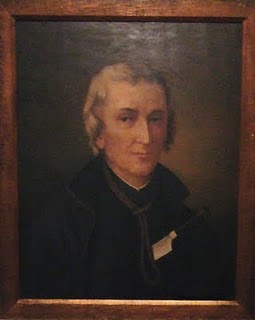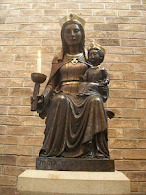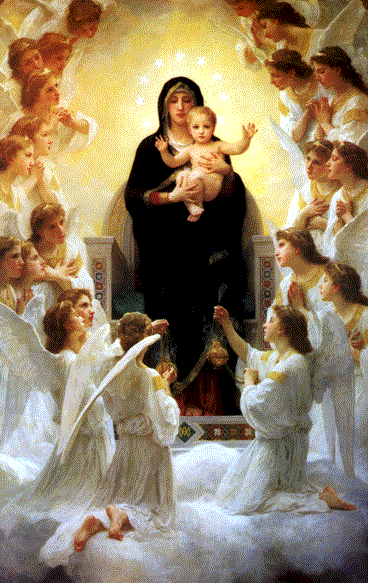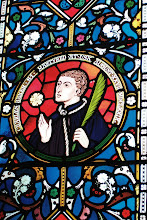The aim of this blog is to spread knowledge of and devotion to the Last Welsh Martyr, St David Lewis. However, St David Lewis did not live in a vacuum or in a bubble! He had family, friends and colleagues. He went places and did things. Events took place and life went on. To convey a sense of his life and times, we have included in previous posts people and places that have touched the life of the martyr. In this post and in future posts, we will continue to do the same.
ST JOHN WALL O F M
St John Wall was born into a wealthy Catholic family in Lancashire in 162
 0 and, at a young age, was sent to the English College at Douai. Interestingly, he was baptised by the future Jesuit Martyr, Edmund Arrowsmith. He enrolled at the English College in Rome on 5th November 1641 under the alias John Marsh. Later, on the English Mission, he used the names of Francis Johnson, Francis Webb and Francis Dromore. Already studying at the English College was a young Welshman, David Lewis, alias Charles Baker. The two became friends and it is thought that John Wall was present in the Lateran Basilica when, on St Stephen’s Day 1642, the recently ordained Fr Lewis preached a short Latin discourse in the presence of Pope Urban VIII.
0 and, at a young age, was sent to the English College at Douai. Interestingly, he was baptised by the future Jesuit Martyr, Edmund Arrowsmith. He enrolled at the English College in Rome on 5th November 1641 under the alias John Marsh. Later, on the English Mission, he used the names of Francis Johnson, Francis Webb and Francis Dromore. Already studying at the English College was a young Welshman, David Lewis, alias Charles Baker. The two became friends and it is thought that John Wall was present in the Lateran Basilica when, on St Stephen’s Day 1642, the recently ordained Fr Lewis preached a short Latin discourse in the presence of Pope Urban VIII.Later that month, Fr Wall was summoned to London for questioning about the alleged Popish Plot. He was lodged in the notorious Newgate Prison where his friend, Fr David Lewis S J, the aged Fr John Kemble, and Fr Roger Handslip, were also incarcerated. In an attempt to implicate them in the fabricated Plot, the four priests had been brought from their respective prisons to be questioned by Titus Oates, William Bedloe, Stephen Dugdale and Myles Prance. Fr Wall spent a month in London and was strictly examined several times by all four. No evidence could be found against him and he was declared innocent of involvement in any plot. Bedloe was the last to examine Fr Wall and he offered the priest his life if he would embrace the Protestant religion. The saintly priest wrote, “But I told them I would not buy my life at so dear a rate as to wrong my conscience”.
In June, Fr Wall was returned to prison in Worcester and there he remained until his execution in August. Two days before his execution, Fr William Levison visited Fr Wall and found him “a cheerful sufferer of his present imprisonment, and ravished, as it were, with joy, with the future hopes of dying for so good a cause”. Fr Levison heard the condemned man’s confession and gave him communion. On the day of execution, 22nd August 1679, Fr Levison stood near the gallows and, as the priest was turned off the ladder, gave him the last absolution. The Sheriff had offered John Wall the opportunity of dying the following day so as to spare him the further humiliation of dying with two common criminals. John thanked the Sheriff for his consideration but told him that if it was good enough for Jesus, then it was good enough for him. Although, as the sentence demanded, Fr John Wall was quartered and his head cut off, his body was permitted to be buried. The Catholics of the town accompanied his body to St Oswald’s Churchyard where it was buried. Less than a week later, on 27th August 1679, Fr Wall’s friend, Fr David Lewis S J, was martyred at Usk.
Fr Levison had taken possession of the Franciscan martyr’s head and, at the first opportunity, conveyed it to Douai. It was kept in the cloisters of the English Franciscans of Douai until the dissolution of that house during the French Revolution. The Fanciscan Nuns at Taunton possess a tooth and a bone of the martyr.
Fr John Wall was beatified in 1929 by Pope Pius XI. On 25th October 1970, Pope Paul VI canonised the Forty Martyrs of England and Wales. Among the forty were the two fellow students and friends, St John Wall and St David Lewis.
*(The photographs, which were taken at Harvington Hall, show a stained glass window depicting St John Wall and the secret chapel that would have been used by St John Wall and other priests in the times of persecution.)









.JPG)

.JPG)





No comments:
Post a Comment